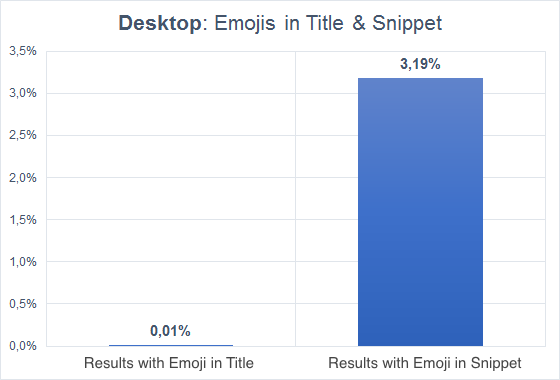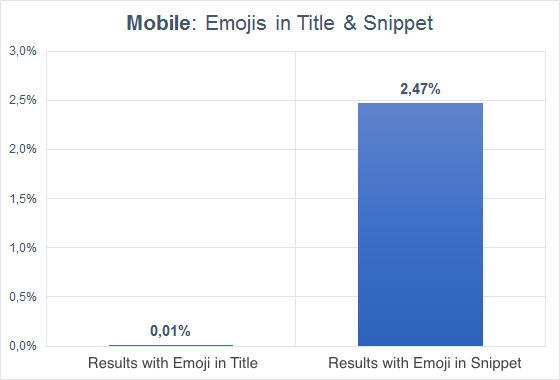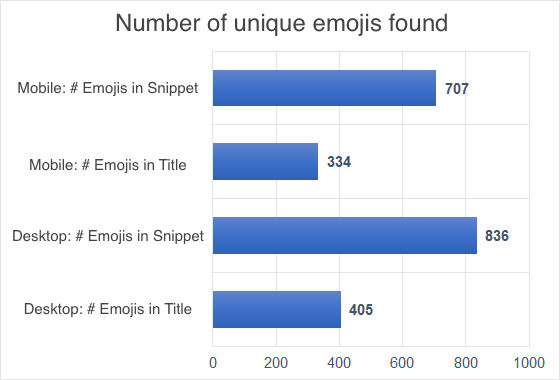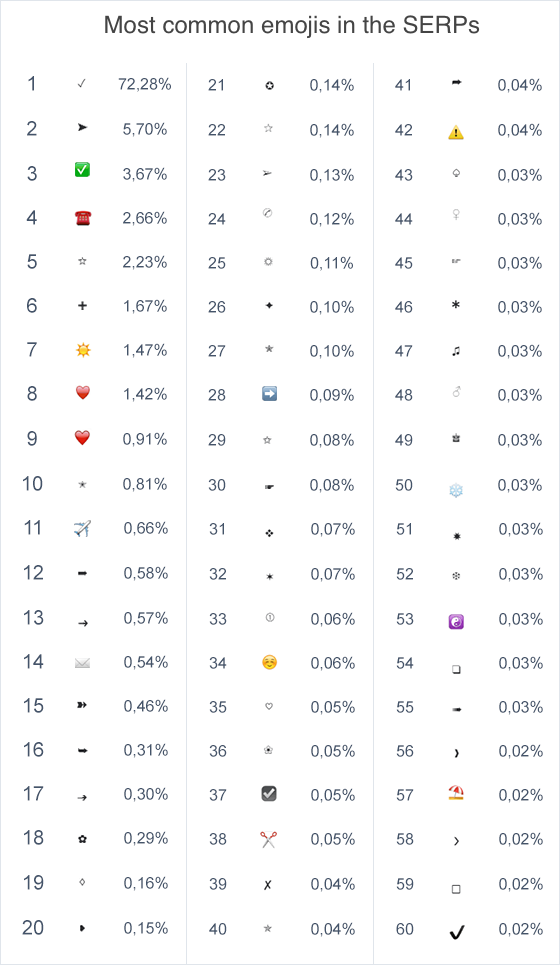User signals are one thing that you cannot imagine to be missing from a modern search engine optimization: show Google that your result is better than the others. In order to even get a chance at doing so, users need to click on your results. And this is where snippet optimization comes into play: your own result on the Google result pages needs to pop and grab the users’ attention.
A few weeks ago, Google gave the green light for using emojis and other special characters within the snippets. You can now use ❤, ✈, ☎ as well as many other characters aside from (just) normal letters, in both the title as well as the meta-description. And, as you can imagine, such a result will certainly call attention to itself (at least for the time being).
In order to evaluate which emojis are shown by Google, we looked at about 250 million search results – both desktop and mobile data – and checked out both the title as well as the snippet text.
First, let’s take a look at how often emojis actually show up within the SERPs (Search Engine Result Pages):

The desktop data shows a clear dichotomy: within the title itself, Google will show emojis and similar special characters only very rarely. We could only see results within the title for 0.012 percent of the SERPs we looked at. When it comes to the snippet text, we have a largely different picture: currently we are seeing a result with at least one emoji for 3.187 percent of the SERPs we evaluated.
Next, we will take a look at the mobile data:

While there is still a vanishingly small amount of emojis within the title, it is surprising that the snippet text also shows results much less frequently: only 2.48 percent of the mobile results, compared to the 3.18 percent for desktop. It seems that Google still treats attention on a smartphone screen differently compared to the large desktop monitors.
Our next evaluation looks at the number of different emojis we found:

It’s not really surprising to see how much more diversity there is for the emojis within the snippet text for both desktop and mobile.
In closing, we looked at which emojis we found the most within the SERPs (both within the description and title):

The big surprise: the check mark (✓) actually makes up nearly three quarters of all emojis found. A long way later, it is followed by arrows, hearts and telephone symbols. Something you should keep in mind when using emojis, is that every browser and operating system shows them differently: anything is possible, from a very unobtrusive black “letter” to an animated and multi-colored work of art.
In case you want to quickly copy&paste any of the emojis we found, check out the Google-doc we set up for you:
